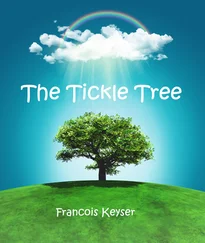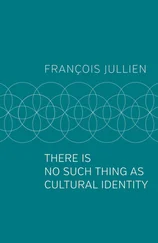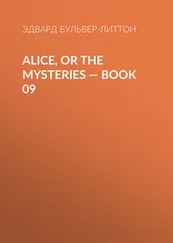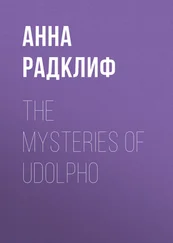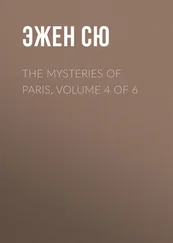The three questionnaires reflect, in their own ways, where things stand concerning the description of bilinguals. They are strong on reported proficiency and use, age and manner of acquisition, and also do well, with one exception, on language functions. They may need to do more, though, on change of language behavior when in monolingual and in bilingual situations, on the evolution of the bilingual’s languages over the years, and on biculturalism. Specific questionnaires already exist for language switching and mixing (e.g., Rodriguez-Fornells et al. 2012) so this may the route they could take in the future for the elements that need to be investigated further.
1 Anderson, John A. E., Lorinda Mak, Aram Keyvani Chahi, and Ellen Bialystok. 2018. “The language and social background questionnaire: Assessing degree of bilingualism in a diverse population.” Behavioral Research Methods, 50: 250–263.
2 Appel, René, and Peter Muysken. 1987. Language Contact and Bilingualism. London: Edward Arnold.
3 Bloomfield, Leonard. 1933. Language. New York: Holt.
4 Cook, Vivian. 1991. “The poverty-of-the-stimulus argument and multi-competence.” Second Language Research, 7: 103–117.
5 de Bot, Kees. 2019. “Defining and assessing multilingualism.” In The Handbook of the Neuroscience of Multilingualism, edited by John W. Schweiter, 3–18. Hoboken, NJ: John Wiley.
6 de Bruin, Angela. 2019. “Not all bilinguals are the same: A call for more detailed assessments and descriptions of bilingual experiences.” Behavioral Sciences, 9 (3): 33. DOI: 10.3390/bs9030033.
7 De Houwer, Annick. 2019. “Language choice in bilingual interaction.” In The Cambridge Handbook of Bilingualism, edited by De Houwer Annick and Lourdes Ortega, 324–348. Cambridge, UK: Cambridge University Press.
8 Dewaele, Jean-Marc, Alex Housen, and Li Wei. 2003. Bilingualism: Beyond Basic Principles. Clevedon, UK: Multilingual Matters.
9 Grosjean, François. 1982. Life with Two Languages: An Introduction to Bilingualism. Cambridge, MA: Harvard University Press.
10 Grosjean, François. 1985. “The bilingual as a competent but specific speaker-hearer.” Journal of Multilingual and Multicultural Development, 6: 467–477.
11 Grosjean, François. 1989. “Neurolinguists, beware! The bilingual is not two monolinguals in one person.” Brain and Language, 36: 3–15.
12 Grosjean, François. 1997. “The bilingual individual.” Interpreting, 2 (1/2): 163–187.
13 Grosjean, François. 2001. “The bilingual’s language modes.” In One Mind, Two Languages: Bilingual Language Processing, edited by Janet Nicol, 1–22. Oxford: Blackwell.
14 Grosjean, François. 2010. Bilingual: Life and Reality. Cambridge, MA: Harvard University Press.
15 Grosjean, François. 2013. “Bilingualism: A short introduction.” In The Psycholinguistics of Bilingualism, edited by François Grosjean and Ping Li, 5–25. Malden, MA and Oxford: Wiley-Blackwell.
16 Grosjean, François. 2015. “Bicultural bilinguals.” International Journal of Bilingualism, 19 (5): 572–586.
17 Grosjean, François. 2016. “The Complementarity Principle and its impact on processing, acquisition, and dominance.” In Language Dominance in Bilinguals: Issues of Measurement and Operationalization, edited by Carmen Silva-Corvalán and Jeanine Treffers-Daller, 66–84. Cambridge: Cambridge University Press.
18 Hakuta, Kenji. 1992. “Bilingualism.” In International Encyclopedia of Linguistics, edited by William Bright, 175–178. Oxford: Oxford University Press.
19 Haugen, Einar. 1969. The Norwegian Language in America: A Study in Bilingual Behavior. Bloomington, IN: Indiana University Press.
20 Li, Ping, Fan Zhang, Anya Yu, and Xiaowei Zhao. 2020. “Language History Questionnaire (LHQ3): An enhanced tool for assessing multilingual experience.” Bilingualism: Language and Cognition, 23 (5): 938–944. DOI: 10.1017/S1366728918001153.
21 Luk, Gigi, and Ellen Bialystok. 2013. “Bilingualism is not a categorical variable: Interaction between language proficiency and usage.” Journal of Cognitive Psychology, 25 (5): 605–621.
22 Luna, David, Torsten Ringberg, and Laura A. Peracchio. 2008. “One individual, two identities: Frame switching among biculturals.” Journal of Consumer Research, 35 (2): 279–293.
23 Mackey, William. 1962. “The description of bilingualism.” Canadian Journal of Linguistics, 7: 51–85.
24 Marian, Viorica, Henrike K. Blumenfeld, and Margarita Kaushanskaya. 2007. “The language experience and proficiency questionnaire (LEAP-Q): Assessing language profiles in bilinguals and multilinguals.” Journal of Speech, Language, and Hearing Research, 50 (4): 940–967.
25 Rodriguez-Fornells, Antoni, Ulrike M. Kramer, Urbano Lorenzo-Seva, Julia Festman, and Thomas F. Münte. 2012. “Self-assessment of individual differences in language switching.” Frontiers in Psychology, 2: 388. DOI: org/10.3389/fpsyg.2011.00388.
26 Romaine, Suzanne. 2013. “The bilingual and multilingual community.” In The Handbook of Bilingualism and Multilingualism, edited by Tej K. Bhatia and William C. Ritchie, 445–465. Oxford: Blackwell.
27 Sia, Jennifer, and Jean-Marc Dewaele. 2006. “Are you bilingual?” Birkbeck Studies in Applied Linguistics (BISAL), 1: 1–19.
28 Silva-Corvalán, Carmen, and Jeanine Treffers-Daller. 2016. Language Dominance in Bilinguals: Issues of Measurement and Operationalization. Cambridge: Cambridge University Press.
29 Thiery, Christopher. 1978. “True bilingualism and second-language learning.” In Language Interpretation and Communication, edited by David Gerver and H. Wallace Sinaiko, 145–153. New York: Plenum.
30 Wei, Li. 2007. “Dimensions of bilingualism.” In The Bilingualism Reader, edited by Li Wei, 3–22. London and New York: Routledge.
31 Weinreich, Uriel. 1953. Languages in Contact: Findings and Problems. New York: Publications of the Linguistic Circle of New York 1.
32 Zubrzycki, Kamil. 2019. “Am I perfect enough to be a true bilingual? Monolingual bias in the lay perception and self-perception of bi- and multilinguals.” International Review of Applied Linguistics (IRAL), 57 (4): 447–495.
1 1 In this chapter, the reader will see a shift from the use of “fluency” in earlier research to “proficiency” in later research. The two are used synonymously here. In chapters that follow, though, we will report on the work of some researchers, as in Chapter 5, who use “fluency/fluent” to mean that a person speaks easily, clearly, and with few hesitations.
2 How Many Bilinguals Are There?
Bilingualism is widespread and can be found in practically every country of the world, in all classes of society, and in all age groups. It has been estimated that probably more than half of the world’s population is bilingual; that is, it uses two or more languages (or dialects) in everyday life. But this is just an estimation and, unfortunately, we are still a long way away from knowing exactly how many people are indeed bilingual. Are things easier if we try to assess the number of bilinguals country by country? Not really as there are huge gaps in what we know. And when some data does exist, it is far from satisfactory.
In the first part of this chapter, we discuss why it is that bilingualism is so widespread and why, wherever one goes in the world, one meets people who know and use two or more languages (or dialects) in their everyday lives.
The second part discusses why it is so difficult to obtain exact figures on the extent of bilingualism. Some national censuses simply do not have language questions. Others have a few but for very specific reasons which do not have to do with bilingualism. Countries that have appropriate questions do exist but they often focus on specific types of bilinguals and not on all bilinguals.
Читать дальше


